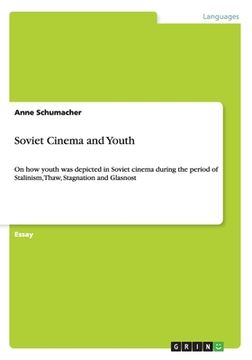Soviet Cinema and Youth: On how youth was depicted in Soviet cinema during the period of Stalinism, Thaw, Stagnation and Glasnost (in English)
Synopsis "Soviet Cinema and Youth: On how youth was depicted in Soviet cinema during the period of Stalinism, Thaw, Stagnation and Glasnost (in English)"
Essay from the year 2013 in the subject Russian / Slavic Languages, grade: 1,3, University of Dalarna, language: English, abstract: The history of the Soviet Union has shown that the light heartedness, the insouciance and the naive optimism, which distinguishes children and adolescents from their parents and grandparents, can disappear easily in times of war and oppression. With the takeover of Josef Stalin in the late 1920s, the beginning of one of the darkest periods of the Soviet Union was announced. Stalin's totalitarian regime was marked by a rigid authoritarianism and a widespread use of terror in form of the so-called purges, which would not end until his death in March 1953.1 In addition to the Stalinist regime, Soviet Union suffered under the consequences of the Eastern Front War (World War II), in which Soviet Union lost thousands and thousands of men, and the ensuing Cold War. This more than twenty years of terror, purges and war was a time in which children rarely had time to be children, and adolescents very seldom had time for leisure and jauntily dreaming, in short to be young. Nor was it a time in which their personal suffering, like the suffering of their parents and grandparents, appeared on screen. Nevertheless was youth represented in Stalinist movies, a lot of young people were showed riding tractors and starred the popular Stalinist musicals. "Youth was the natural supporter of the new regime" and the older generations "could be treated with circumspection" (Gillenspie, 2003, p. 164). Though it was never one person only the starred a Stalinist movie, the hero was the collective and individual miseries and fates never played a role in Stalinist cinema. Problems of the youth were hushed up, like all other form of social malaise (Gillespie, 2003, p. 157). Pain and suffering did barely exist officially and were not represented in the movies of the Stalin era, which were meant to serve as an instrument of the communist ideology. [...]

